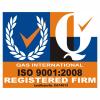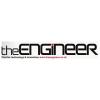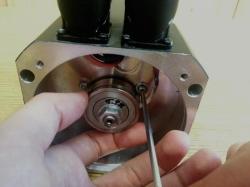- - CALL US ON - -
Tel. +44 (0)161 217 7100
A note of caution when repairing motors
At Motor Technology we deal, almost exclusively, with servo motors and often receive calls for assistance when things go wrong. In a recent story in Motor Technology News we pointed out the need to get the motor phasing right. It doesn’t end there.
Typically motor repairs are for mechanical damage like worn bearings, faulty holding brakes, or a burnt-out winding. Most providers are likely to handle these without any problem, the trouble is that only specialist repairers will have the facilities to carry out a full functional test of the servo motor before it is returned to you.
There is more to servo motors, in particular brushless servo motors, as the servo drive needs a reference position for the rotor to be able to apply the electrical commutation correctly. This is why servo motors are usually fitted with either hall-sensors, resolvers, incremental or absolute encoders, or even a combination. If the feedback device isn't correctly aligned when the motor is reassembled, then, quite simply, it won't work. In such a scenario the best you could hope for is that the motor won't start, but in the worst case it could run away, out of control, with the potential for causing damage and possible injury.
Imagine replacing a home or limit switch on your machine without making sure it is refitted in the correct position. Things are likely to go wrong.
The whole situation is potentially made worse as the “repaired” motor may not go straight back on the machine, but go into maintenance stores as a spare. You won't even know there's a problem until you come to install it. In a situation like this, if you don't have another motor to call on, then you could have inoperable machinery until the problem is resolved.
If you are looking to have a servo motor repaired we suggest simply asking if the repairer will ensure the feedback unit is refitted in the correct position and ideally if they will carry out a functionality test on the motor. If you don't and the repairer overlooks this then you could have problems the next time you try and run the motor.
On feedback devices like hall sensors and resolvers a simple mark on the shaft and housing may suffice. On encoders this may be a bit more difficult as you want to mark the position of the encoder shaft, where it marries to the motor shaft. Best of all, if you have a suitable servo drive, connect the motor before sending it out and note the angular offset of the feedback device. You can then check the motor once back from repair and put it on to the machine or into stock with reassurance that it will work.
You may be operating servo drives that have the functionality to automatically set the phasing and commutation points, in which case this shouldn’t be an issue. If you don’t, then we suggest it is worth posing the question.







